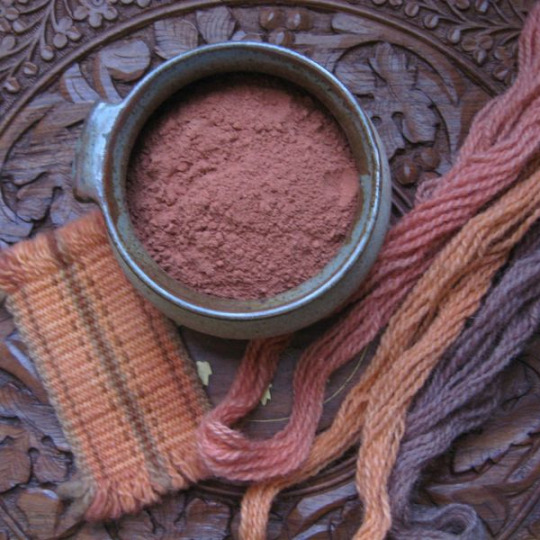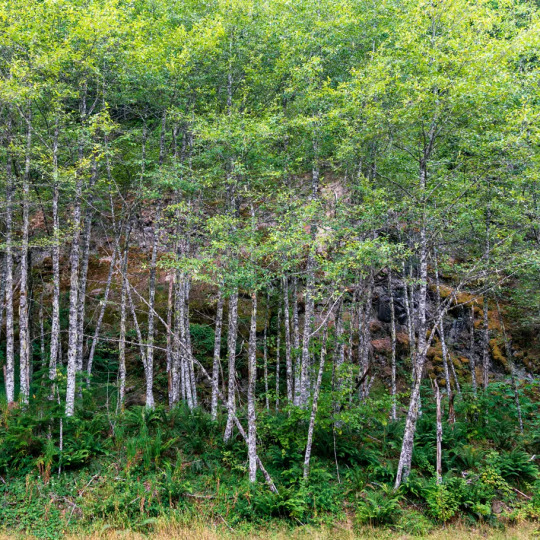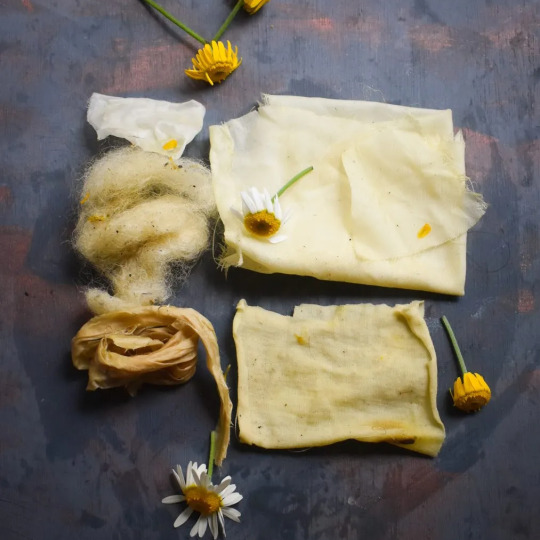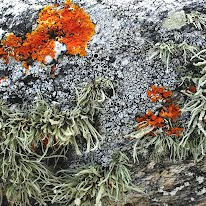#Roccella tinctoria
Explore tagged Tumblr posts
Photo









x x x x x x x x x
Natural Dyes used by the Elves and Humans Part One (by color)
Part of a series on fabric, textiles, and fashion throughout Arda
Other posts: Hairstyles among the Edain, Elven and Human Crowns, Noldorin fashion, Telerin fashion (contains other topics too) Vanyar fashion(contains other topics too)
I always love world building like this so please feel free to request topics! I also can’t cover all cultures in each post so feel free to prompt me others to cover!
Finally you can also always ask me to cover peoples or places through the lens of real world locations
Red, orange, yellow
Note: salt and tannic acid are the most common mordants. I can make a separate post on that though if there’s interest
The roots of Common madder and other madder species was used primarily by the Bëorians of Ladros as well as the humans East of the Ered Luin. The method was learned by elves and dwarves in and around the Ered Luin as the Bëorians moved West. It was the plant they used most commonly for dyes and produced the color for their ceremonial sashes among other things. It was used for wool and flax fabric
Alder bark is used by the Sindar both in and outside Doriath (especially in Mithrim) and by the Halidan to make both red and yellow dyes and thus orange dyes. It was used mostly for wool
Saffron was used by both humans and elves in Northeastern Beleriand and East of the Blue Mountains. It made a yellow dye that could be used for linen, flax and cotton fabrics
The pollen and flower of fennel was used for pale red dyes in Nevrast by the Sindar and in some parts of Ossiriand by the Green elves.
Roccella tinctoria, a lichen was used to create a red dye mainly found on rocks in Nevrast and was collected by the gray elves and Falathrim.
Dyer’s weed or Reseda luteola was used throughout Beleriand and to the East though most commonly by the Falathrim and the Green elves.
Hypericum perforatum (St. John’s wort) was found throughout Beleriand and to the East though was used primarily by the Hadorians to make yellow dyes for non woolen fabric
This is just a selection I put together while at work! As always please feel free to ask more! I love ethnobotany and similar topics about plants and stuff
78 notes
·
View notes
Photo






Roccella tinctoria
The history of R. tinctoria stretches all the way back to Pliny the Elder--one of my favorite bizarre historical figures who got a lot of information wrong. And in this case, it was by describing R. tinctoria as a plant with “knotted roots” that resembles grass, but I suppose I can forgive him for that one. At least he didn’t prescribe it as a treatment for gout or something, as he was want to do. This fruticose lichen has thin, cylindrical branches which grow in erect bunches from a single holdfast. It is light brown or greenish-brown in coloration, and spotted with farinose sorelia in convex clumps. It grows on costal rock in the Mediterranean and Macronesia. R. tinctoria has historically been used by humans for dying, as it produces a surprising red-purple color from it’s secondary metabolite Orcinol. It is also a main component of litmus--as in “litmus test”--a mixture used as a pH indicator.
images: source | source
info: source | source | source | source
#lichen#lichens#lichenology#lichenologist#lichenized fungus#fungus#fungi#mycology#ecology#biology#history#natural history#biodiversity#systematics#taxonomy#life science#natural science#environmental science#nature#naturalist#beautiful nature#weird nature#look for lichens#Pliny the Elder#cottagecore#naturecore#Roccella#Roccella tinctoria#I love lichens#lichens are so good
37 notes
·
View notes
Photo

Chrozophora tinctoria (L.) Tornasole Comune (Montagnola, Villafrati) È una pianta TOSSICA, generalmente non mortale, non a caso fa parte della famiglia delle Euforbie. Causa vomito, diarrea, mal di pancia. Non assomiglia particolarmente ad alcuna pianta commestibile, ma è pur sempre bene conoscerla. L'uso tradizionale in alcune popolazioni è quello emetico, catartico e antielmintico. Il corpo infatti espellendo da sé la pianta con vomito e diarrea neutralizzerebbe la sua tossicità e con questa anche quella di altri elementi cattivi dal tratto gastrointestinale (vermi, veleni...) che da soli il corpo non riesce a espellere. Ci sono delle ricerche scientifiche che stanno valutando questo utilizzo in campo medico. NULLA DI SICURO I suoi composti fitoterapici non hanno altri utilizzi, benché alcune sostanze, estratte dalla pianta, hanno riscontrato delle proprietà (antitumorali, antibatteriche...) queste non sono utilizzabili con tecniche quali essiccamento, tintura, idrolato ecc... poiché riguardano singole sostanze e non l'intero fitocomplesso (tossico). La pianta inibisce l'acetilcolinesterasi, anche per questo è tossica e causa il vomito. Gli inibitori dell'acetilcolinesterasi in medicina possono venire utilizzati come tossine, agenti nervini (nelle guerre), ma possono anche essere utilizzati singolarmente nel trattamento della miastenia, anche quella causata da avvelenamento da botulino, nell'Alzheimer e contro alcuni veleni, anticolinergici in particolare. Questo avvarrebbe l'ipotesi che si possa utilizzare secondo il suo uso tradizionale in particolare per espellere estratti di Atropa Belladonna e singoli agenti anticolinergici (Atropina ecc...). Potrebbe in tal caso inibire anche l'azione di farmaci anticolinergici. Nel medioevo era una pianta tintoria, ad esempio per i manoscritti. Il "tornasole", detto "folium" nel medioevo, era un colore estratto dai frutti della pianta, generalmente azzurro ma che si è scoperto avere la capacità di mostrarsi più rosso in ambiente acido. Oggi si estrae sostanzialmente da altre fonti come i licheni del genere Roccella. Si usa in chimica per misurare il pH, ad esempio nelle cartine tornasole. https://www.instagram.com/p/CiuemwANylN/?igshid=NGJjMDIxMWI=
0 notes
Photo






Volcanism & pioneer lichens in Lanzarote
When researching activities to do on holiday, I was particularly excited to find an ancient volcano in walking distance and as my boyfriend an I love hill walking and trekking, we instantly decided we were going to climb it for sure. Standing at 194 m, or ~636 ft tall, the Montaña Roja (Red Mountain), is one of the numerous volcanoes that have shaped the complex geological history of this island, which emerged from the ocean around 15 million years ago during the Miocene and has never been connected to a continental landmass. Between 1730 and 1736, a quarter of the island was covered in a thick layer of lava during its most intense volcanic event, which has left the area still partly active and protected as the Timanfaya National Park, but at an estimated 0.8 million years of age, the Montaña Roja on the southern coast is far older and part of earlier stages of active volcanism.
As we made our way up its eastern slope, all that was in sight was a rocky, barren, almost martian landscape, and only the occasional low shrub and the blue sky above us reminded us we were still on Earth. And then we were on top!



After taking in the view I had a look around and it was quickly apparent the rim of the volcano, the more shaded inner slopes of the crater and its bottom were harbouring more life than I had expected. In particular, lichens were thriving and very abundant, large patches of leafy, yellow-green Ramalina bourgeana were covering the rocks together with the crustose orange Xanthoria. The former, locally known as escán, has historically been used as a tanning agent for leather-making while the latter, like the fruticose Stereocaulon vesuvianum, is an active weathering agent on lava substrate. Many more species of lichens are present on the island, one worth mentioning being Roccella tinctoria, from which a purple dye and a source of income have been derived since ancient times.
Thinking back, I shouldn’t have been so surprised to find some of the organisms best adapted to the extremes of our planet in such a hostile and barely habitable place, it only makes sense.
#volcano#montaña roja#Lanzarote#geology#volcanism#trekking#photography#nature photography#canary islands#lichens#ramalina bourgeana#xanthoria#plantblr#not plants#xeric landscape#ethnolichenology#escán
21 notes
·
View notes
Photo


Wait, how do I pass a Litmus Test?
The word litmus has two possible etymologies: the first possibility litmose comes from the Old Norse combination of litr meaning color and mosi meaning moss. For the Norse, the lichen Roccella tinctoria was used for dying clothes. Ernest Weekly’s Etymological Dictionary of Modern English goes as far as to identify a probable time and date that the word entered English: around 1300 from Norway via the port town of Lynn. The Oxford Universal English Dictionary offers the Middle Dutch word leecmoos or lijcmoes from a combination of the Hundustani word lac (from which we get our word lacquer) meaning a dark red incrustation shed by certain insects and moes, meaning pulp. The OUED does offer the Old Norse as a related derivation.
Litmus was first identified for scientific use by Robert Boyle (Happy Birthday, Robert, born on this day, January 25, 1627) -when he identified paper treated with crushed and prepared leaves from the lichen. The resulting light blue paper will turn red in the presence of acid and back to blue in the presence of a base. The first figurative use of ‘litmus test’ not seen until the 1950s. Today 'litmus test’ has as much political use as it does scientific use, and the current administration is applying a strict anti-climate litmus test for federal employees. Contact your Congressional Delegation if you think SCIENCE should be above simple litmus tests: https://www.congress.gov/contact-us
Image of roccella tinctoria courtesy of Leif and Anita Stridvall. You can see more of their fantastic gallery of all things plant related here: http://www.stridvall.se/la/galleries.php
62 notes
·
View notes
Text
New Post has been published on THIẾT BỊ KHOA HỌC CÔNG NGHỆ
New Post has been published on http://thietbikhoahoccongnghe.com.vn/litmus.html
Litmus
Litmus là hỗn hợp hòa tan trong nước các loại thuốc nhuộm khác nhau được chiết xuất từ cỏ dại. Nó thường được hấp thụ trên giấy lọc để tạo ra một trong những mẫu chỉ báo pH lâu đời nhất, dùng để kiểm tra độ axit.
Lịch sử Litmus đã được sử dụng lần đầu tiên vào khoảng năm 1300 bởi nhà giả kim thuật Arnaldus de Villa Nova ở Tây Ban Nha. Từ thế kỷ 16, thuốc nhuộm xanh được chiết xuất từ một số loại cỏ dại, đặc biệt là ở Hà Lan.
Nguồn tự nhiên
Parmelia sulcata Litmus có thể được tìm thấy trong các loài lan khác nhau. Thuốc nhuộm được chiết xuất từ các loài như Roccella tinctoria (Nam Mỹ), Roccella fuciformis (Angola và Madagascar), Roccella pygmaea (Algeria), Roccella phycopsis, Lecanora tartarea (Nauy, Thụy Điển), Variolaria dealbata, Ochrolechia parella, Parmotrema tinctorum, và Parmelia. Hiện nay, các nguồn chính là Roccella montagnei (Mozambique) và Dendrographa leucophoea (California).
SAMSUNG DIGIMAX 420
Sử dụng “Bài kiểm tra bằng giấy màu da trời” chuyển hướng ở đây. Đối với các mục đích sử dụng khác, hãy xem bài kiểm tra Litmus (disambiguation).
Giấy lanh đang được sử dụng Việc sử dụng chính của chất lõng là để kiểm tra liệu một giải pháp có tính axit hay cơ bản. Giấy ướt lơ lửng cũng có thể được sử dụng để kiểm tra các khí hòa tan trong nước có ảnh hưởng đến tính axit hoặc kiềm; khí tan trong nước và các giải pháp kết quả màu giấy litmus. Ví dụ, khí amoniac, có tính kiềm, màu xanh lam đỏ giấy màu xanh da trời.
Giấy màu lam lanh chuyển sang màu đỏ trong điều kiện axit và giấy lụn màu đỏ chuyển sang màu xanh lam trong điều kiện cơ bản hoặc kiềm, với sự thay đổi màu sắc xảy ra trong khoảng pH 4,5-8,3 ở 25 ° C (77 ° F). Giấy Neutral litmus có màu tím. Tinh dầu cũng có thể được chuẩn bị như một dung dịch nước có chức năng tương tự. Trong các điều kiện axit, dung dịch có màu đỏ và trong các điều kiện cơ bản, dung dịch có màu xanh lam.
Litmus (chỉ số pH) dưới pH 4,5 trên pH 8,3 4,5 ⇌ 8,3 Các phản ứng hóa học khác với axit bazơ cũng có thể gây ra sự thay đổi màu cho giấy lụa. Ví dụ, khí clo biến giấy màu xanh lơ mầu trắng – thuốc nhuộm litmus được tẩy trắng, vì sự hiện diện của ion hypochlorit. Phản ứng này là không thể đảo ngược được, do đó chất lõng không hoạt động như một chỉ thị trong trường hợp này.
Hóa học Hỗn hợp litmus có số CAS 1393-92-6 và chứa từ 10 đến 15 nhuộm khác nhau. Hầu hết các thành phần hóa học của litmus có thể giống như các thành phần liên quan được gọi là orcein, nhưng ở các tỷ lệ khác nhau. Ngược lại với orcein, thành phần chính của litmus có khối lượng phân tử trung bình là 3300. Các chỉ số axit bazơ trên litmus có giá trị thuộc tính của chúng đối với chất màu 7-hydroxyphenoxazone . Một số phân số của litmus được đặt tên cụ thể bao gồm erythrolitmin (hoặc erythrolin), azolitmin, spaniolitmin, leucoorcein, và leucazolitmin. Azolitmin cho thấy hiệu quả gần giống như litmus.
Cơ chế Sắc đỏ có chứa một axit diprotic yếu. Khi nó được tiếp xúc với một hợp chất cơ bản, các ion hydro sẽ phản ứng với thêm vào. Các cơ sở liên hợp, hình thành từ axit lanh, có một màu xanh, do đó, giấy màu nâu đỏ ẩm ướt chuyển thành dung dịch kiềm.
0 notes
Video
youtube
What is LITMUS? What does LITMUS mean? LITMUS meaning - LITMUS pronunciation - LITMUS definition - LITMUS explanation - How to pronounce LITMUS? Source: Wikipedia.org article, adapted under http://ift.tt/yjiNZw license. Litmus is a water soluble mixture of different dyes extracted from lichens. It is often absorbed onto filter paper to produce one of the oldest forms of pH indicator, used to test materials for acidity. Litmus was used for the first time about 1300 AD by Spanish alchemist Arnaldus de Villa Nova. From the 16th century on, the blue dye was extracted from some lichens, especially in the Netherlands. Litmus can be found in different species of lichens. The dyes are extracted from such species as Roccella tinctoria (South America), Roccella fuciformis (Angola and Madagascar), Roccella pygmaea (Algeria), Roccella phycopsis, Lecanora tartarea (Norway, Sweden), Variolaria dealbata, Ochrolechia parella, Parmotrema tinctorum, and Parmelia. Currently, the main sources are Roccella montagnei (Mozambique) and Dendrographa leucophoea (California). The main use of litmus is to test whether a solution is acidic or basic. Wet litmus paper can also be used to test for water-soluble gases that affect acidity or alkalinity; the gas dissolves in the water and the resulting solution colors the litmus paper. For instance, ammonia gas, which is alkaline, colors the red litmus paper blue. Blue litmus paper turns red under acidic conditions and red litmus paper turns blue under basic or alkaline conditions, with the color change occurring over the pH range 4.5–8.3 at 25 °C (77 °F). Neutral litmus paper is purple. Litmus can also be prepared as an aqueous solution that functions similarly. Under acidic conditions, the solution is red, and under basic conditions, the solution is blue. Chemical reactions other than acid-base can also cause a color change to litmus paper. For instance, chlorine gas turns blue litmus paper white – the litmus dye is bleached, because of presence of hypochlorite ions. This reaction is irreversible, so the litmus is not acting as an indicator in this situation. The litmus mixture has the CAS number 1393-92-6 and contains 10 to 15 different dyes. Most of the chemical components of litmus are likely to be the same as those of the related mixture known as orcein, but in different proportions. In contrast with orcein, the principal constituent of litmus has an average molecular mass of 3300. Acid-base indicators on litmus owe their properties to a 7-hydroxyphenoxazone chromophore. Some fractions of litmus were given specific names including erythrolitmin (or erythrolein), azolitmin, spaniolitmin, leucoorcein, and leucazolitmin. Azolitmin shows nearly the same effect as litmus. Red litmus contains a weak diprotic acid. When it is exposed to a basic compound, the hydrogen ions react with the added base. The conjugated base, formed from the litmus acid, has a blue color, so the wet red litmus paper turns blue in alkaline solution.
0 notes
Text
New Post has been published on THIẾT BỊ KHOA HỌC CÔNG NGHỆ
New Post has been published on http://thietbikhoahoccongnghe.com.vn/chi-thi-ph-phan-3.html
Chỉ thị pH - Phần 3
Điểm tương đương Trong việc chuẩn độ axit-bazơ, một chỉ thị pH không phù hợp có thể gây ra sự thay đổi màu trong dung dịch chứa chỉ thị trước hoặc sau điểm tương đương thực tế. Kết quả là các điểm tương đương nhau cho một giải pháp có thể được kết luận dựa trên chỉ số pH được sử dụng. Điều này là do sự thay đổi màu sắc nhỏ nhất của dung dịch chỉ thị cho thấy điểm tương đương đã đạt được. Do đó, chỉ thị pH thích hợp nhất có một dải pH hiệu quả, nơi có sự thay đổi về màu sắc, bao gồm độ pH của điểm tương đương của dung dịch đang được chuẩn độ.
Các chỉ số pH tự nhiên xảy ra Nhiều thực vật hoặc bộ phận của cây trồng có chứa các hóa chất từ các họ của các hợp chất anthocyanin tự nhiên. Chúng có màu đỏ trong dung dịch axit và màu xanh da trời. Anthocyanins có thể được chiết xuất bằng nước hoặc các dung môi khác từ nhiều cây hoặc các bộ phận của cây, bao gồm từ lá (cải bắp đỏ); hoa (geranium, hoa nhài, hoặc cánh hoa hồng); quả mọng (quả việt quất, blackcurrant); và thân (rhubarb). Chiết xuất anthocyanins từ cây gia đình, đặc biệt là bắp cải đỏ, để tạo ra một chỉ thị pH thô là một cuộc trình diễn hóa học phổ biến.
Litmus, được các nhà giả kim thuật sử dụng ở thời Trung Cổ và vẫn sẵn có, là một chỉ thị độ pH tự nhiên được tạo ra từ hỗn hợp các loài cỏ dại, đặc biệt là Roccella tinctoria. Từ litmus có nghĩa đen từ “rêu màu” ở tiếng Na Uy cổ (xem Litr). Màu sắc thay đổi giữa màu đỏ trong dung dịch axit và màu xanh trong kiềm. Thuật ngữ “test litmus” đã trở thành phép ẩn dụ được sử dụng rộng rãi cho bất kỳ bài kiểm tra nào nhằm mục đích phân biệt giữa các lựa chọn khác nhau.
Hoa húng quế macrophylla có thể thay đổi màu sắc tùy theo độ chua của đất. Trong đất axit, các phản ứng hóa học xảy ra trong đất làm cho nhôm có sẵn cho những cây này, biến màu xanh hoa. Trong đất kiềm, các phản ứng này không thể xảy ra và do đó nhôm không được lấy bởi nhà máy. Kết quả là những bông hoa vẫn còn màu hồng.
Indicator Low pH color High pH color Hydrangea flowers blue pink to purple Anthocyanins red blue Litmus red blue
0 notes